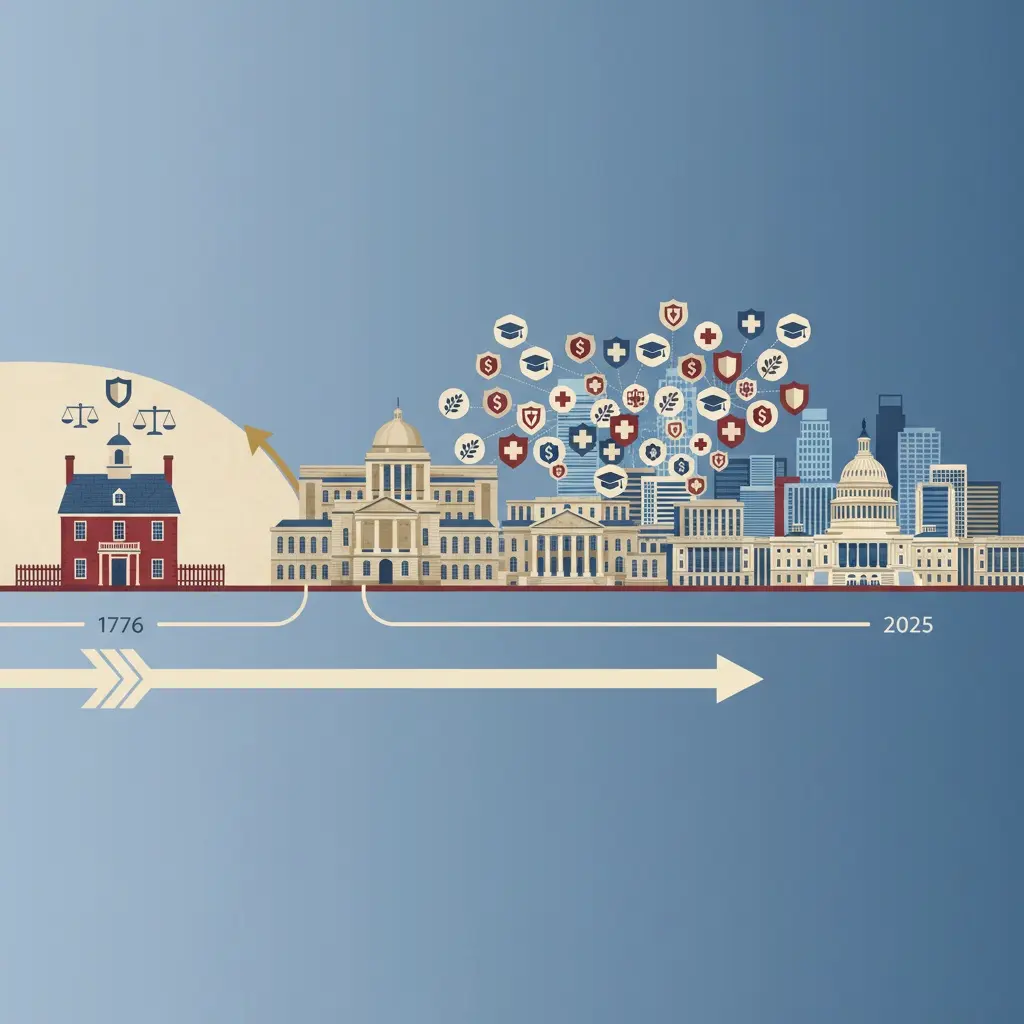As America approaches its 250th birthday in 2026, it's remarkable to reflect on how dramatically both our government and our flags have evolved. At Baldwin Flag Company, a family business operating since 1908, we've had a front-row seat to much of this transformation.
The Government That Started It All
In 1776, America began with 13 colonies, a Continental Congress, and a revolutionary idea: government by the people. Our first flag reflected this simplicity—13 stars and 13 stripes representing united colonies breaking free from monarchy.
What's Changed Most in Government: The Expansion of Federal Power
1. From Confederation to Federal System The biggest transformation came early—moving from the weak Articles of Confederation to our current Constitution in 1787. This shift created the federal system we know today, balancing state and national power.
2. The Growth of Federal Agencies In 1776, the federal government had virtually no departments. Today, we have 15 cabinet-level departments and hundreds of agencies managing everything from national defense to environmental protection.
3. Voting Rights Expansion Perhaps the most profound change: who gets to participate. From property-owning white men to universal adult suffrage, America has gradually lived up to its founding ideals of equality and representation.
4. The Presidency's Evolution The presidency has transformed from a largely ceremonial role to the powerful executive office we know today. Modern presidents wield influence our founders never imagined.

How Our Flags Reflect These Changes
The Star-Spangled Growth Our flag has grown from 13 stars to 50, each addition marking not just new territory, but the expansion of American ideals across a continent. Every star represents millions of new Americans joining our democratic experiment.
Design Standardization Early American flags varied wildly in design. The Flag Act of 1818 established the pattern we know today: 13 stripes for the original colonies, with stars added for new states. This standardization reflects our government's growing organization and attention to national symbols.
Flag Etiquette and Respect The U.S. Flag Code, established in 1923, shows how seriously we take our national symbol. These guidelines reflect our government's role in preserving national unity and respect.
What Hasn't Changed: The Core Values
Despite massive transformations, certain principles remain constant:
- Representative democracy: We still elect our leaders
- Federalism: States retain significant power
- Individual rights: Protected by the Constitution
- The flag's symbolism: Still represents liberty, justice, and unity

The Flag's Enduring Power
Through civil war, world wars, social movements, and political upheavals, the American flag has remained our most powerful unifying symbol. It flies over government buildings that house a system far more complex than our founders envisioned, yet still dedicated to their core principles.
Looking Toward 250 and Beyond
As we approach America's semiquincentennial, both our government and our flag face new challenges. Digital democracy, global interconnectedness, and evolving social values will shape the next chapter of American governance.
But one thing remains certain: the American flag will continue to fly as a symbol of our ongoing experiment in self-governance, representing not just what we've been, but what we aspire to become.

The Baldwin Flag Company Legacy
For over a century, we've helped Americans display their flag with pride. From small-town courthouses to major corporations, we've installed flagpoles and provided flags that honor both our history and our future.
Celebrate America's 250th with a premium flagpole installation from Baldwin Flag Company. Call (314) 535-2800 or visit baldwinflags.com to discuss how we can help you display the flag that represents 250 years of American progress.

America at 250: How Government and Flags Have Transformed Together